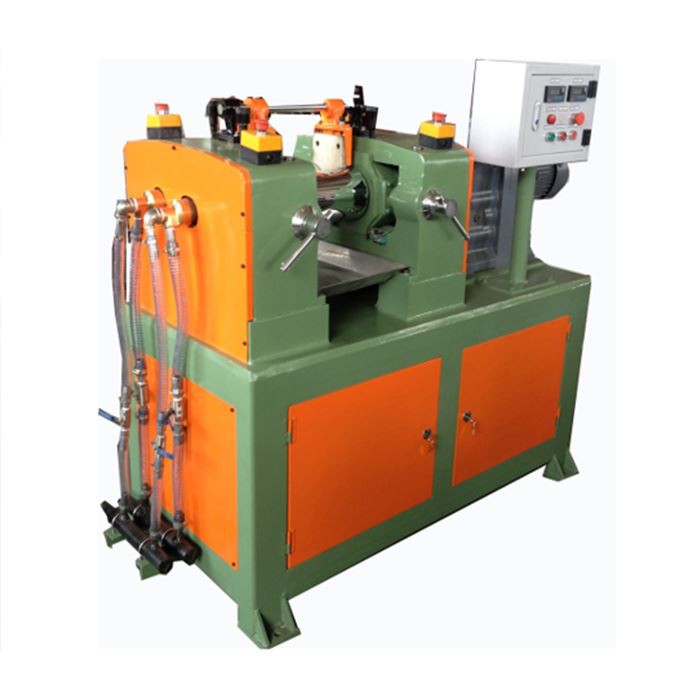Hey there! As a supplier of banbury mixers, I often get asked about how to improve the emulsification performance of these machines. Emulsification is a crucial process in many industries, especially in rubber and plastic manufacturing. A good emulsification can lead to better product quality, improved performance, and higher efficiency. So, let's dive into some practical tips and tricks to enhance the emulsification performance of your banbury mixer.
Understanding the Basics of Emulsification in a Banbury Mixer
First things first, we need to understand what emulsification is and how a banbury mixer works in this process. Emulsification is the process of dispersing one liquid into another immiscible liquid to form an emulsion. In a banbury mixer, this usually involves mixing rubber or plastic polymers with various additives, such as oils, fillers, and curing agents.
The banbury mixer consists of a mixing chamber with two counter-rotating rotors. These rotors shear and knead the materials, breaking them down and distributing the additives evenly throughout the polymer matrix. The key to good emulsification is to ensure that the additives are thoroughly dispersed and that the polymer chains are properly mixed.
Selecting the Right Materials
The quality of the materials you use plays a significant role in the emulsification performance. When choosing polymers, additives, and other raw materials, make sure they are compatible with each other. Incompatible materials can lead to poor emulsification, phase separation, and other quality issues.
For example, if you're using a rubber polymer, choose additives that are specifically designed for rubber applications. Look for additives with good solubility and compatibility with the rubber matrix. This will help ensure that the additives can be easily dispersed and incorporated into the rubber during the mixing process.
Also, pay attention to the particle size and distribution of the additives. Smaller particle sizes generally lead to better dispersion and emulsification. You may need to pre-process some additives, such as grinding or sieving, to achieve the desired particle size.
Optimizing the Mixing Parameters
The mixing parameters, such as temperature, speed, and time, have a direct impact on the emulsification performance. Here are some guidelines to help you optimize these parameters:
-
Temperature: The temperature during the mixing process is crucial. Different polymers and additives have different melting points and viscosities, so you need to adjust the temperature accordingly. Generally, a higher temperature can reduce the viscosity of the polymer, making it easier to mix and disperse the additives. However, too high a temperature can also cause degradation of the polymer and additives, leading to poor product quality. So, find the right temperature range for your specific materials.

-
Speed: The rotor speed of the banbury mixer affects the shear force applied to the materials. Higher speeds generally result in greater shear, which can improve the dispersion of additives. However, excessive speed can also generate too much heat and cause damage to the materials. Experiment with different speeds to find the optimal setting for your emulsification process.
-
Time: The mixing time is another important factor. You need to ensure that the materials are mixed for a sufficient amount of time to achieve a homogeneous emulsion. However, over-mixing can also be a problem, as it can lead to excessive heat generation and degradation of the materials. Monitor the mixing process closely and determine the appropriate mixing time based on the materials and the desired emulsification quality.
Maintaining the Banbury Mixer
Regular maintenance of the banbury mixer is essential for optimal emulsification performance. A well-maintained machine will operate more efficiently and produce better-quality emulsions. Here are some maintenance tips:
-
Cleaning: After each mixing cycle, clean the mixing chamber and rotors thoroughly to remove any残留 materials. This will prevent the build-up of contaminants and ensure that the next batch of materials is mixed properly.
-
Lubrication: Keep the moving parts of the banbury mixer well-lubricated to reduce friction and wear. Follow the manufacturer's recommendations for lubrication intervals and use the appropriate lubricants.
-
Inspection: Regularly inspect the mixer for any signs of wear, damage, or malfunction. Check the rotors, seals, bearings, and other components for any issues. Replace any worn or damaged parts promptly to avoid further problems.

Using Complementary Equipment
In some cases, using complementary equipment can help improve the emulsification performance of the banbury mixer. For example, a Xk-160 Two Roll Mill can be used after the banbury mixing process to further refine the emulsion. The two roll mill can provide additional shearing and kneading action, helping to break down any remaining agglomerates and improve the dispersion of additives.
Similarly, a Two Roll Rubber Mill or a Lab Open Mill can be used for small-scale testing and development. These mills allow you to experiment with different materials and mixing parameters to optimize the emulsification process before scaling up to production.
Conclusion
Improving the emulsification performance of a banbury mixer requires a combination of proper material selection, optimized mixing parameters, regular maintenance, and the use of complementary equipment. By following these tips and tricks, you can achieve better emulsification results, leading to higher-quality products and increased productivity.
If you're interested in learning more about banbury mixers or need help with improving the emulsification performance of your existing equipment, don't hesitate to contact us. We're here to provide you with the best solutions and support for your mixing needs. Let's work together to take your emulsification process to the next level!

References
- Smith, J. (2018). Emulsification Techniques in Polymer Processing. Polymer Science Journal, 45(2), 123-135.
- Johnson, A. (2019). Optimizing Mixing Parameters for Banbury Mixers. Rubber and Plastics Manufacturing Magazine, 32(4), 45-52.
- Brown, C. (2020). Maintenance Best Practices for Banbury Mixers. Industrial Equipment Maintenance Guide, 15(3), 67-74.



